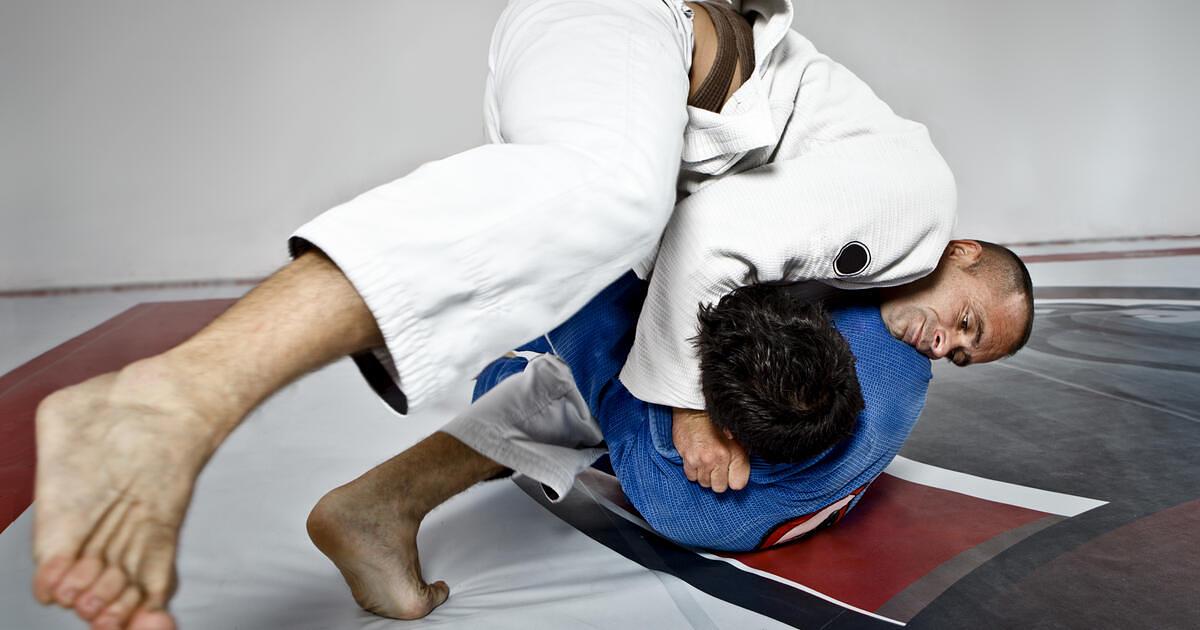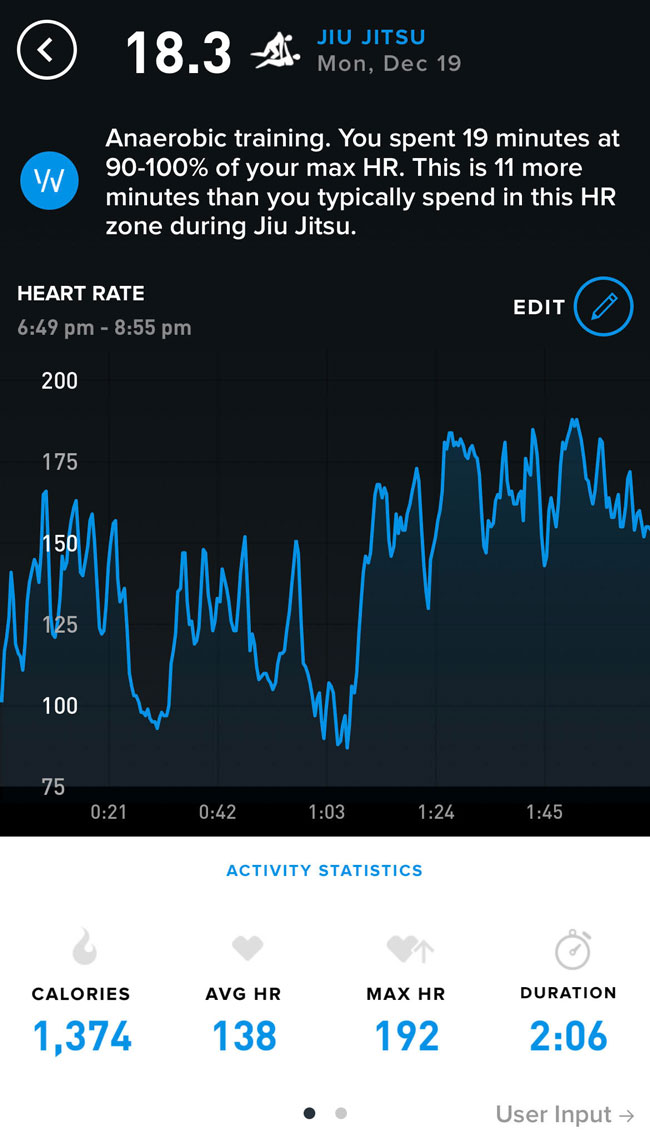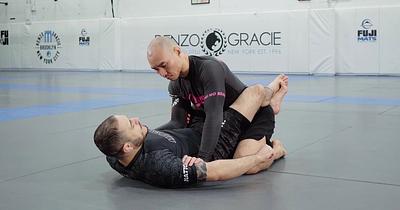How Many Calories Does BJJ Training Burn? A Comprehensive Guide
by Team Digitsu
Updated: March 24, 2025

Brazilian Jiu-Jitsu, commonly known as BJJ, is a martial art that has gained widespread popularity in recent years as a self-defense system and a physically demanding and rewarding fitness activity. BJJ training involves various techniques and movements that challenge the body and mind, including sparring, drilling, rolling, and strength and conditioning exercises.
As with any physical activity, understanding how many calories are burned during BJJ training can be important for weight management and overall health. Estimating your calories burned from BJJ training is an essential step for using BJJ for weight loss. The number of calories burned during a BJJ training session can vary based on several factors, including intensity, duration, body weight, and individual differences in metabolism. This article will explore these factors and provide tips for estimating calorie burn during BJJ training.
Factors That Affect Calorie Burn During BJJ training
The number of calories burned during BJJ training can vary significantly depending on the intensity of the training, the duration of the training session, the individual's body weight and composition, and their age and gender. Here is a closer look at each of these factors and how they can impact calorie burn during BJJ training:
Intensity of training: The intensity of BJJ training can range from light drills and technique practice to full-on sparring sessions. Generally speaking, the more intense the training, the more calories burned. For example, a vigorous sparring session may burn significantly more calories than a slow-paced drill session.
Duration of the training session: The longer the BJJ training session, the more calories will be burned. However, it is essential to note that the calorie burn rate decreases over time as the body becomes more fatigued.
Body weight and composition: A person's body weight and composition can also affect calorie burn during BJJ training. In general, a person with more body mass will burn more calories than a person with less body mass, all else equal. Additionally, muscle tissue tends to burn more calories at rest than fat tissue, so individuals with higher muscle mass may burn more calories during BJJ training.
Age and gender: Age and gender can also affect calorie burn during BJJ training. As a person ages, their metabolism tends to slow down, decreasing calorie burn. Additionally, men tend to have a higher metabolic rate than women, meaning they may burn more calories during BJJ training. However, these differences can be mitigated by factors such as body weight and muscle mass.
Using WHOOP to Estimate Calories Burned During BJJ training
There are several ways to estimate the number of calories burned during BJJ training. One excellent method is to use a heart rate tracking device, such as a WHOOP, which can provide a rough estimate of calorie burn based on an individual's heart rate and other physiological data. WHOOP uses height, weight, age, gender, and heart rate to estimate calories burned during activity. We like WHOOP because you can wear it in a sleeve under your rashguard or even within underwear they make for their tracker. This allows you to wear it during BJJ training. Many other trackers are worn on the wrist or are often bulky when worn on the arm, making them difficult to use when training BJJ.
Our group has noticed that it is common to burn around 500 calories in typical bjj class consisting of a warmup, drilling technique, and some live rolling sessions.

However, we've seen as low as 250 calories in sessions consisting mainly of technique drilling and over 1,000 in very intense training sessions.

Using Metabolic Equivalent (MET) to Estimate Calories Burned During BJJ
Another manual way to estimate calorie burn is using metabolic equivalent (MET) values. MET values are a way of measuring the energy cost of physical activity. They are expressed in terms of the amount of oxygen consumed per minute per kilogram of body weight. The higher the MET value, the more calories are being burned.
For BJJ training activities, the following MET values can be used as a rough guide:
- Sparring: 6-8 METs
- Drilling: 4-6 METs
- Rolling: 5-7 METs
To use MET values to estimate calorie burn, you can multiply the MET value for a particular activity by your body weight in kilograms and the duration of the activity in minutes. For example, if a 70kg person engages in 45 minutes of sparring at a MET value of 7, they can estimate their calorie burn to be approximate:
(7 METs x 70kg x 45 minutes) / 60 minutes/hour = 441 calories burned
It's important to note that these values are estimates and may not be accurate for everyone. Other factors, such as intensity and individual differences in metabolism, can also affect calorie burn.
Overall, using MET values can be a helpful way to estimate calorie burn during BJJ training. Still, it is essential to consider multiple factors and to consult with a healthcare professional or fitness professional for more personalized recommendations.
Other Considerations for Calorie Expenditure During BJJ training
In addition to the factors discussed in previous sections, there are several other considerations to consider when estimating calorie burn during BJJ training.
One crucial consideration is diet and nutrition. While physical activity can contribute to weight management, diet also plays a significant role. To lose weight, an individual must create a calorie deficit by either burning more calories through physical activity or consuming fewer calories through their diet.
Another important consideration is the non-caloric benefits of BJJ training. While calorie burn is an essential factor, BJJ training can offer many other benefits beyond simply burning calories. These benefits include improved strength, endurance, coordination, and overall physical and mental well-being.
It's important to remember that every individual is unique. The number of calories burned during BJJ training can vary significantly based on factors such as intensity, duration, body weight, and individual differences in metabolism. It is always a good idea to consult a healthcare professional or fitness professional for personalized recommendations on calorie needs and weight management.
Conclusion
In conclusion, BJJ training can be a physically demanding and rewarding activity that can contribute to weight management through calorie burn. The number of calories burned during a BJJ training session can vary based on factors such as intensity, duration, body weight, and individual differences in metabolism.
To estimate calorie burn during BJJ training, individuals can use heart rate tracking devices or metabolic equivalent (MET) values as a rough guide. However, it is important to note that these values are estimates and may not be accurate for every individual. Other factors such as diet, nutrition, and the non-caloric benefits of BJJ training should also be considered when managing weight through physical activity.
Overall, it is essential to remember that every individual has unique calorie needs, and it is always a good idea to consult with a healthcare professional or fitness professional for personalized recommendations on weight management.


